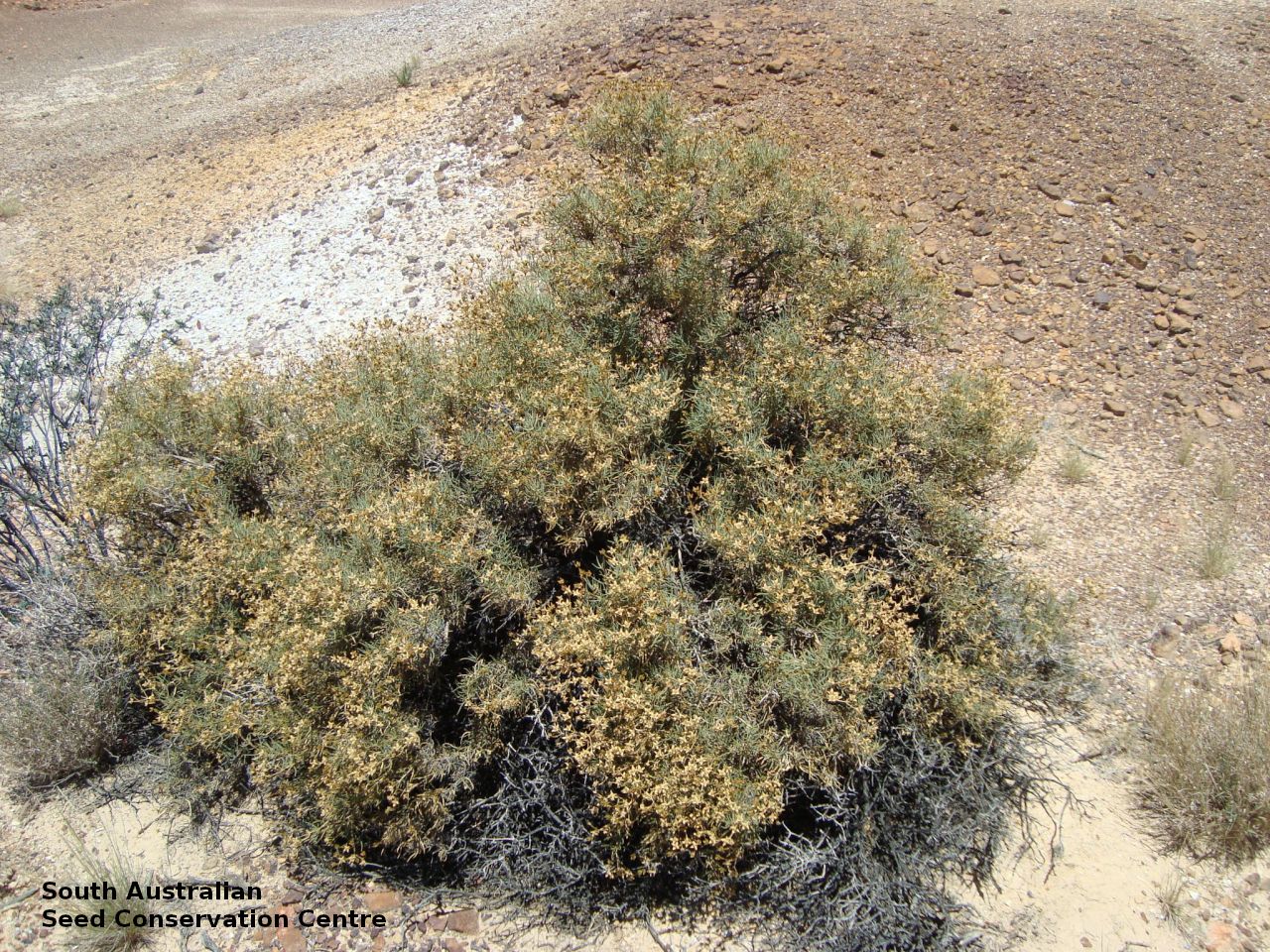
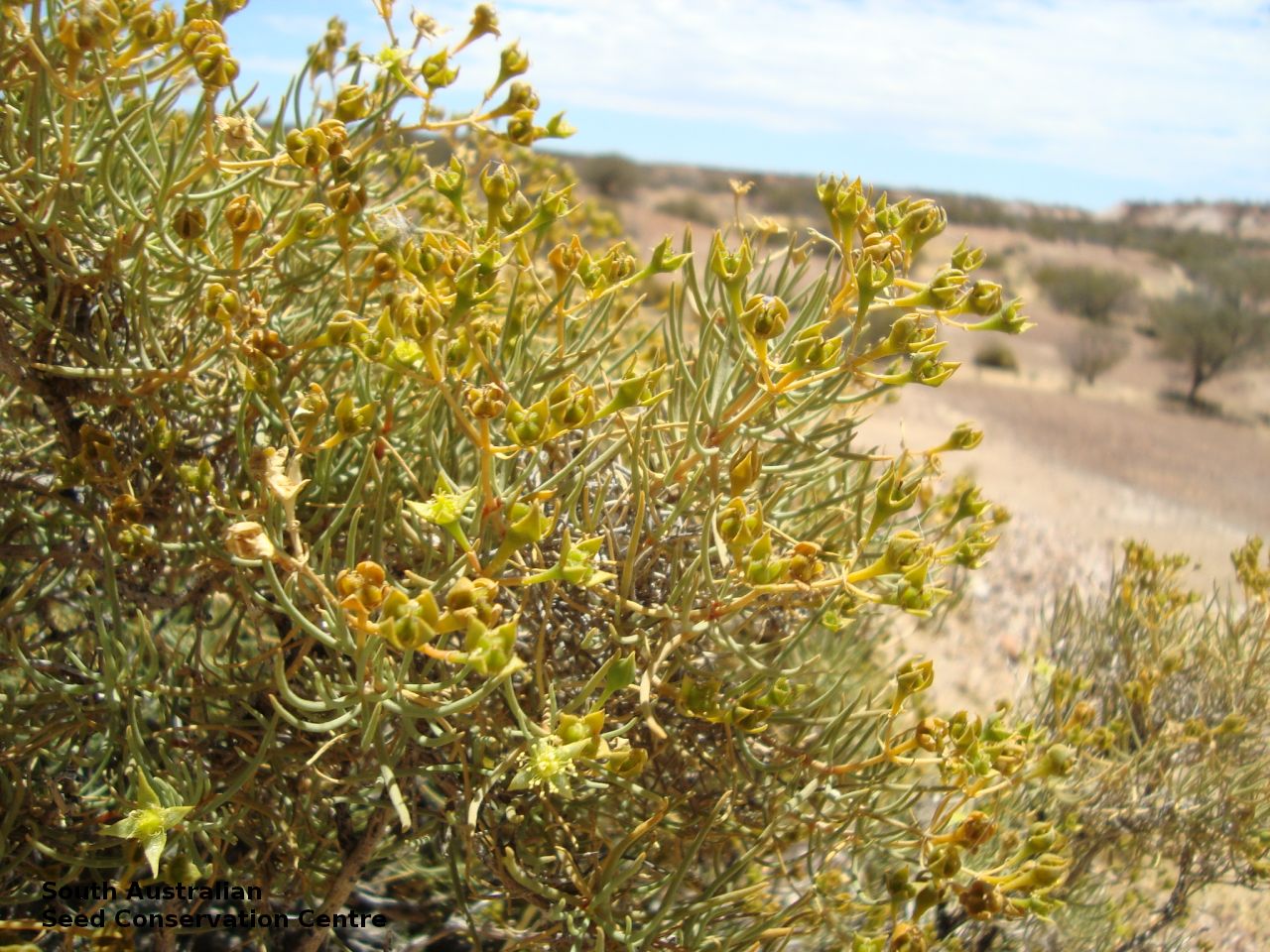
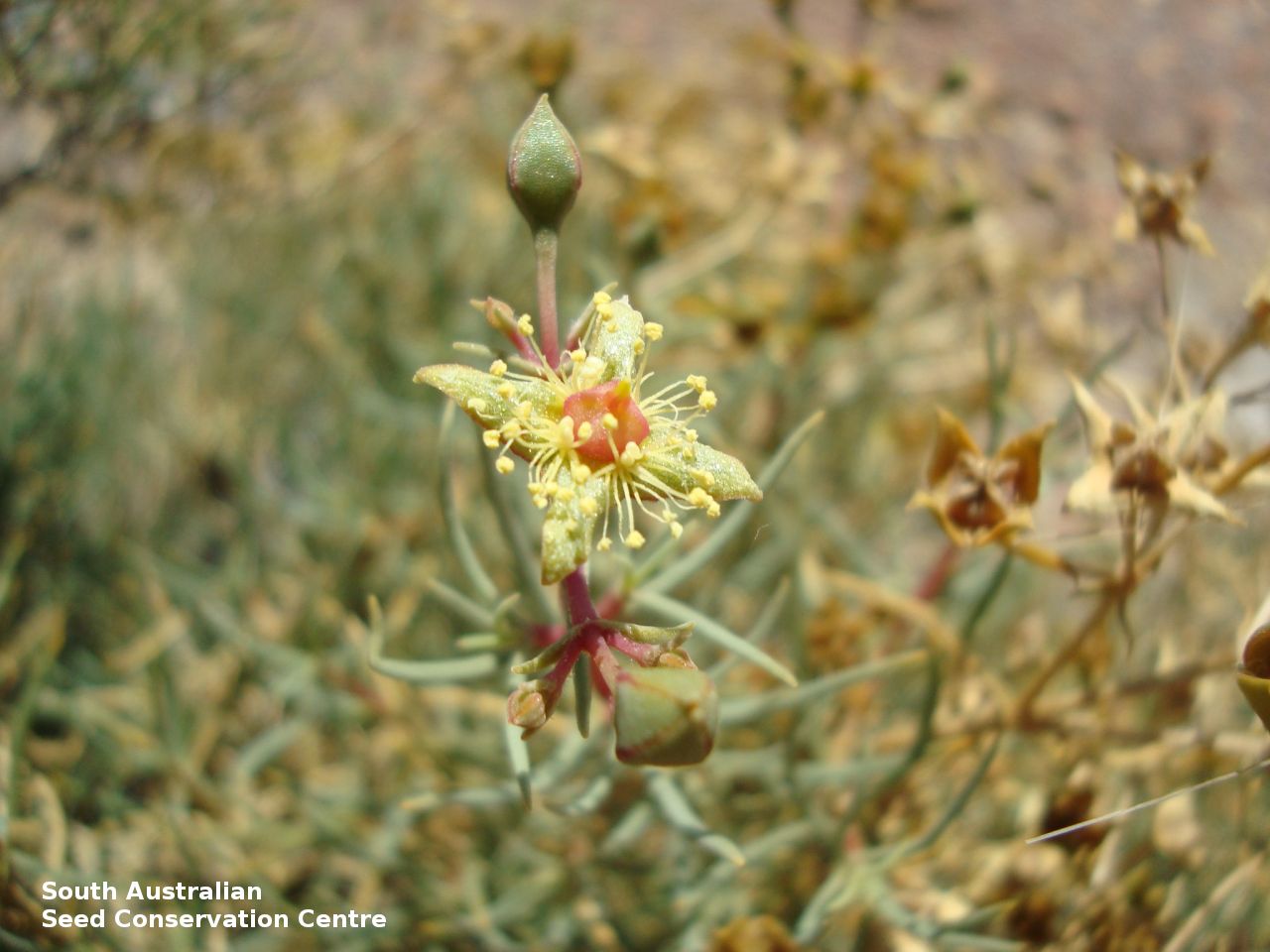
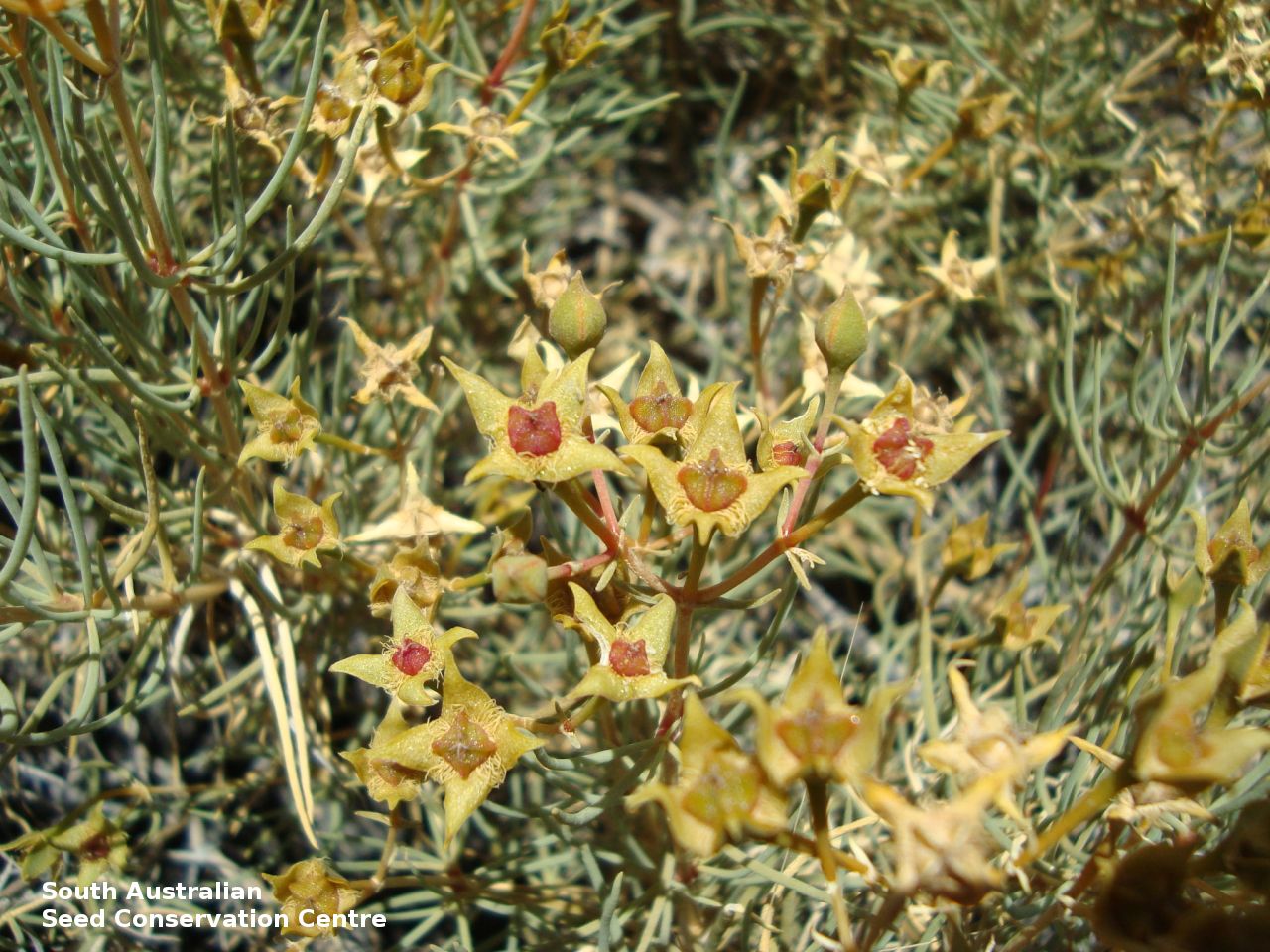
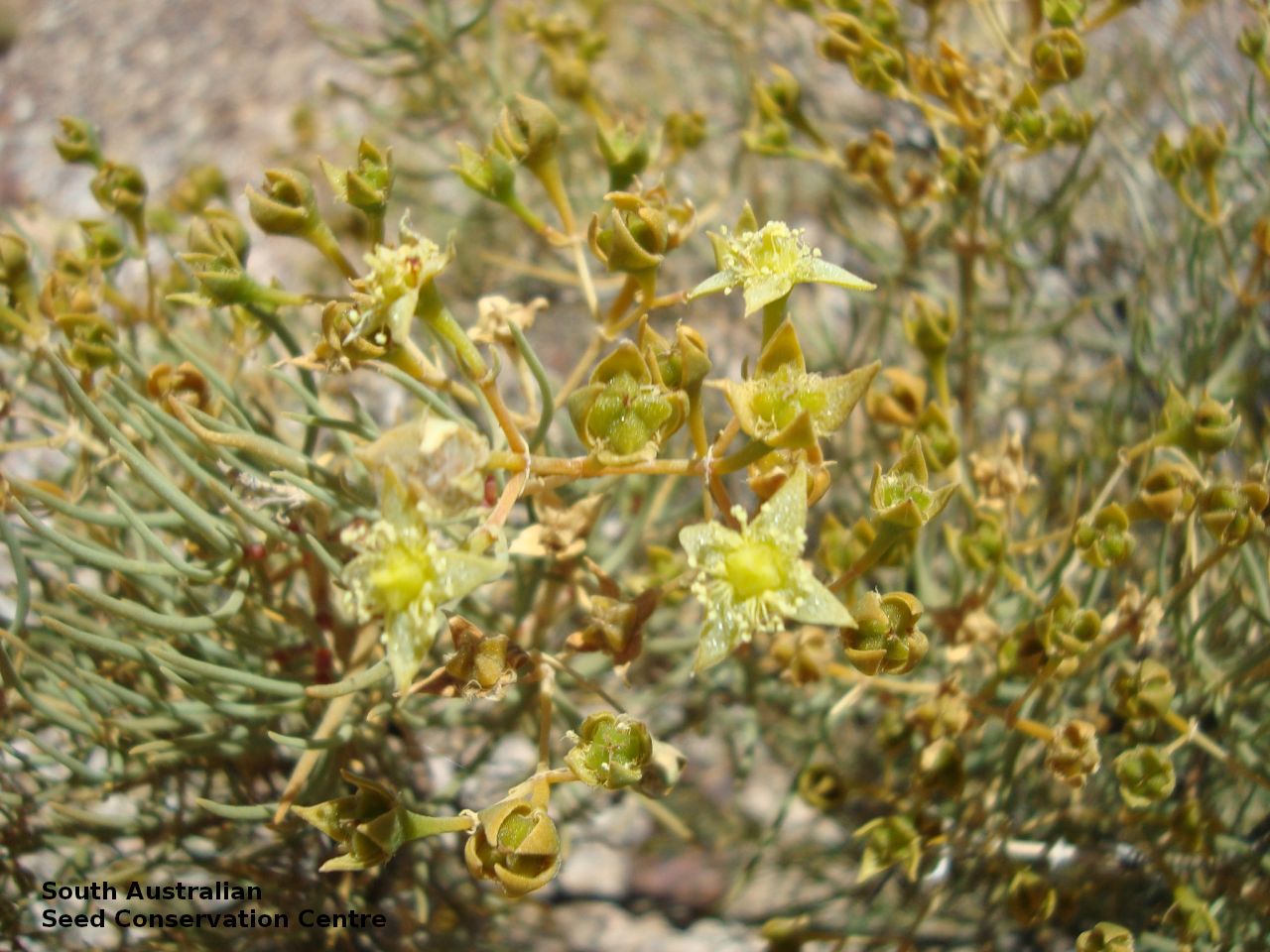
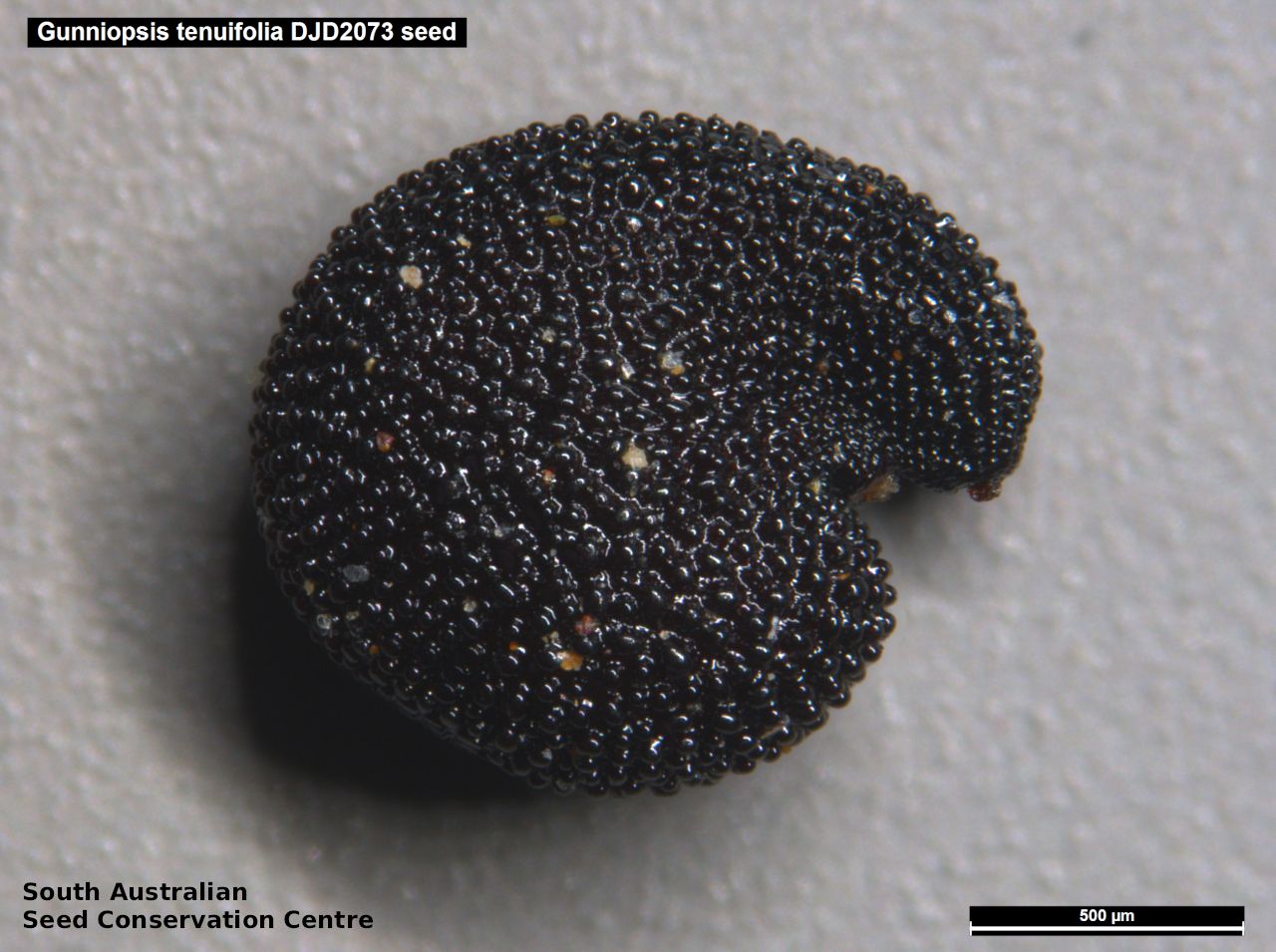
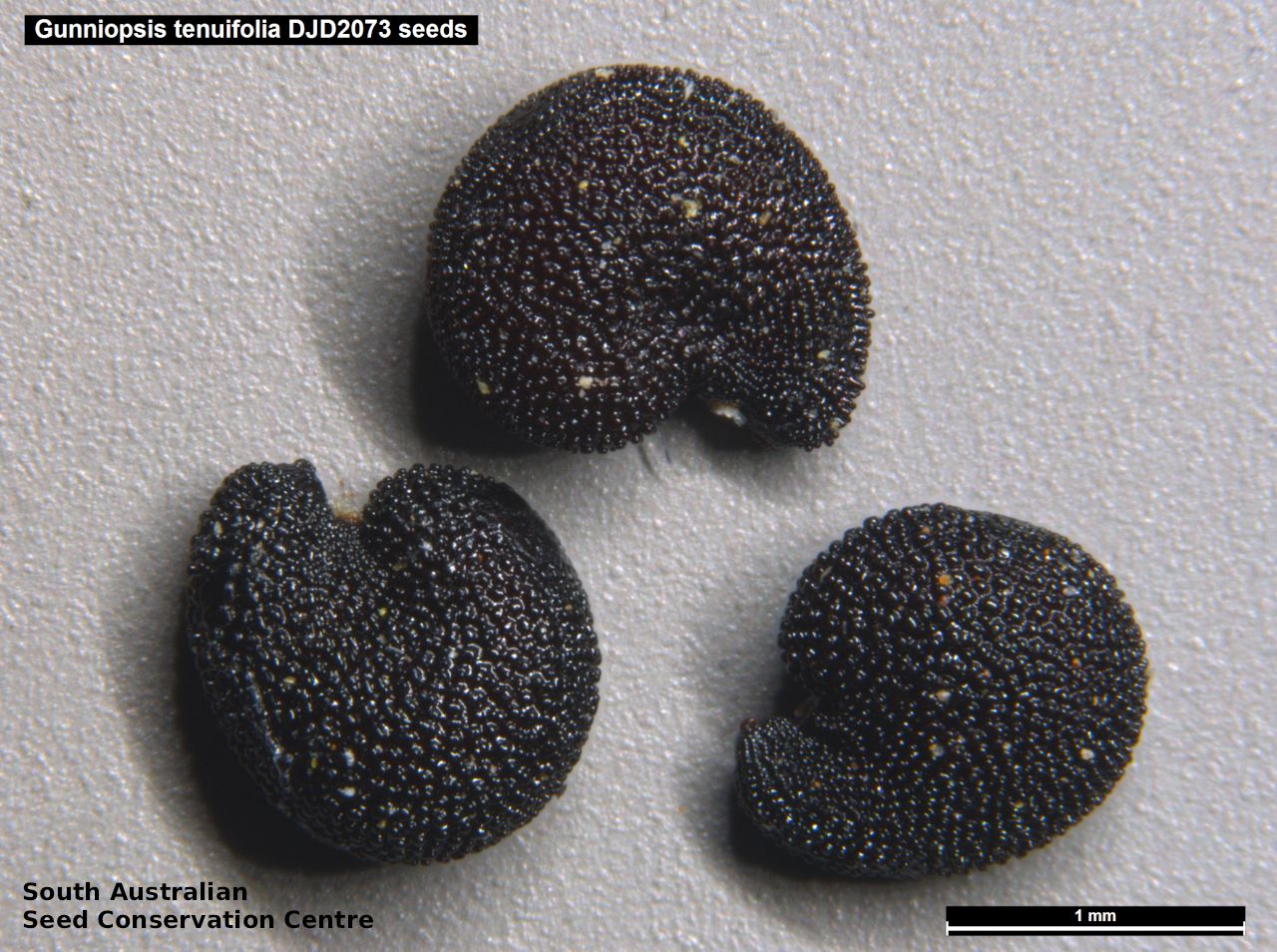
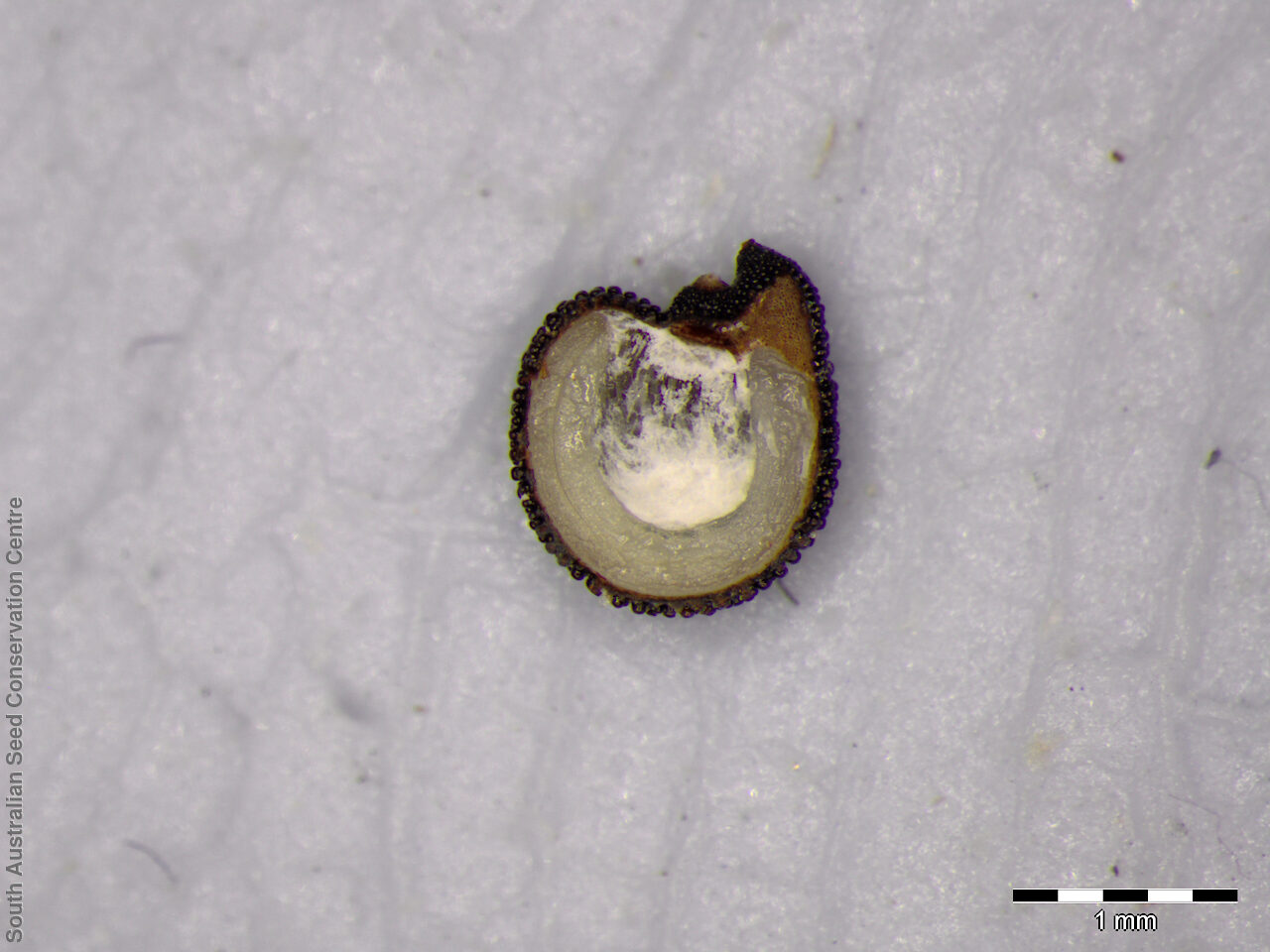
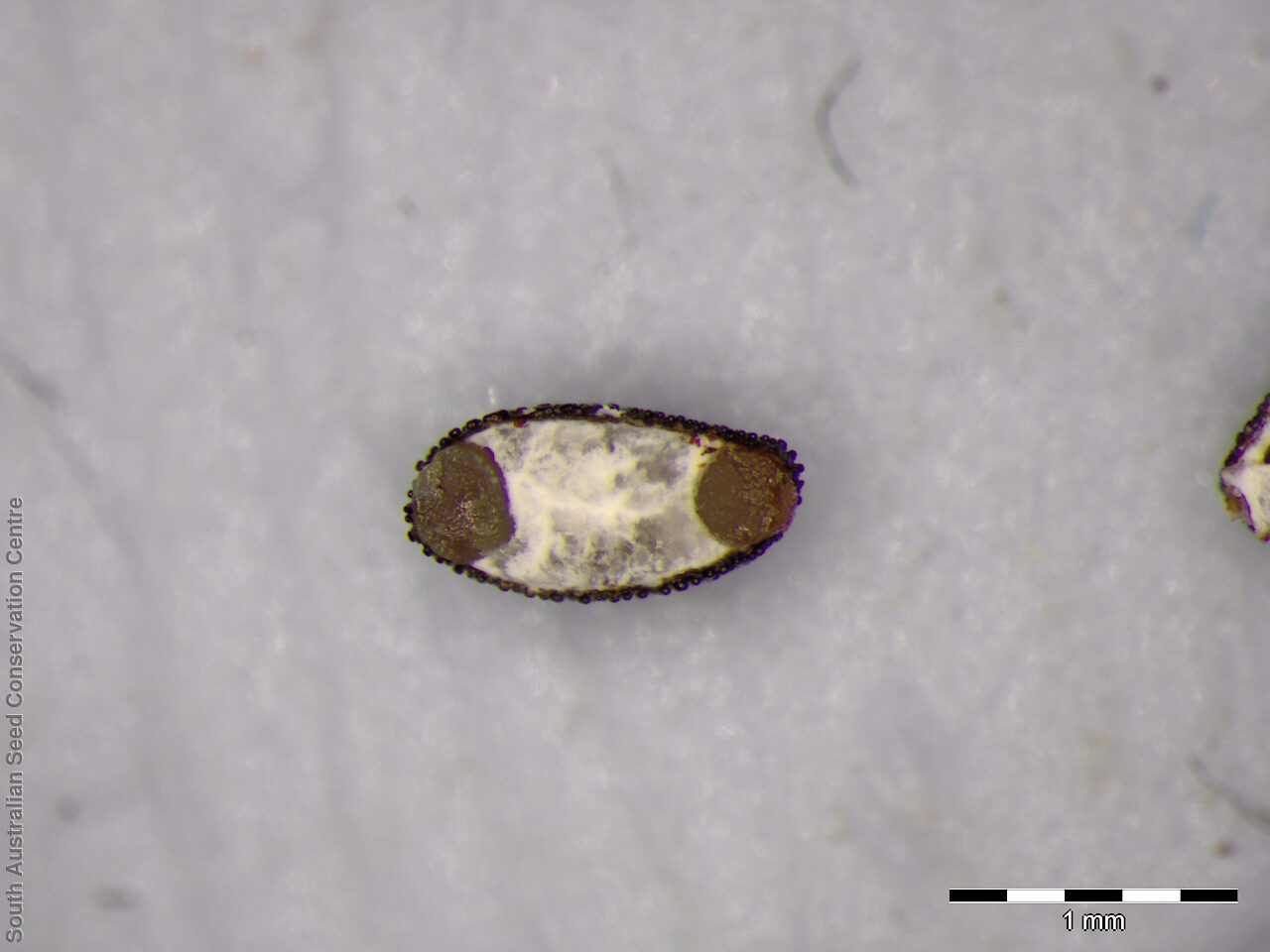

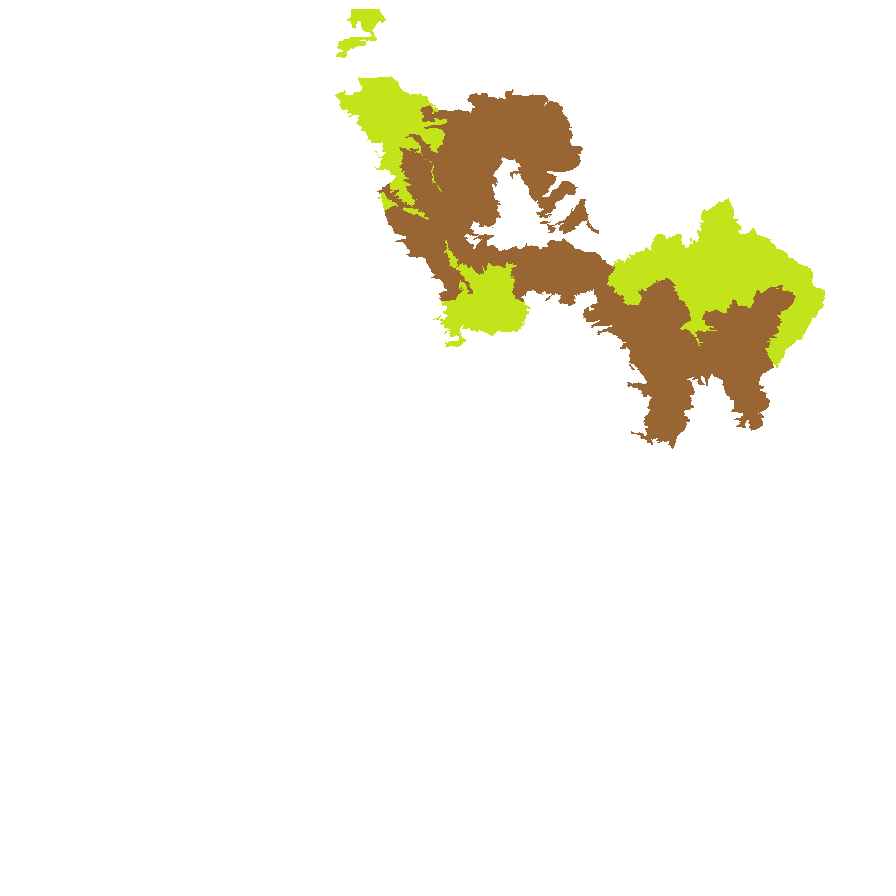
Botanical art
Etymology
Gunniopsis from the genus Gunnia, named after Ronald Campbell Gunn (1808-1881), a Tasmanian botanist, and from the Greek 'opsis' meaning resembling, alluding to the resemblance of this genus to the genus Gunnia. Tenuifolia from the Latin 'tenuis', meaning slender and 'folium' meaning a leaf, referring to the species having slender leaves.
Distribution and status
Endemic to South Australia and found from Leigh Creek north-west to the Arkaringa Hills, growing on stony slopes of low hills, clay flats and depressions subject to periodic flooding, and on light brown clay flats under open mallee woodland. Native. Uncommon in South Australia.
Herbarium regions: Lake Eyre, Flinders Ranges
NRM region: South Australian Arid Lands
AVH map: SA distribution map (external link)
Plant description
Perennial rounded glabrous shrub to 1 m high with reddish-tinged branches. Leaves terete, minutely papillose with villous hairs at base; yellow-green to 62 mm long and 2 mm wide. Flower small, pedicellate, distinctly aggregated into a small terminal flower spike; outside surface green to reddish; inside surface yellow-green. Flowering between August and January. Fruits are brown capsule to 6.5 mm long, with 2 valves. Seeds are small black reniform seed to 0.1.2 mm long, covered with small round tubercules. Seed embryo type is peripheral.
Seed collection and propagation
Collect seeds between March and October. Pick mature capsules when they turn a straw colour and contain hard dark seeds. Place the capsules in a tray and leave to dry for at least a week. Then rub the dried capsules to dislodge the seeds. Use a sieve to separate the unwanted material. Store the seeds with a desiccant such as dried silica beads or dry rice, in an air tight container in a cool and dry place. From one collection, the seed viability was high, at 90%.
| Location | No. of seeds (weight grams) | Number of plants | Date collected | Collection number Collection location | Date stored | % Viability | Storage temperature |
|---|---|---|---|---|---|---|---|
| BGA MSB | 3,000 (2.32 g) 3,000 (2.32 g) | 30 | 14-Dec-2010 | DJD2073 Lake Eyre | 1-Jan-2012 | 90% | -18°C |
Number of plants: This is the number of plants from which the seeds were collected.
Collection location: The Herbarium of South Australia's region name.
% Viability: Percentage of filled healthy seeds determined by a cut test or x-ray.